The MC51 was a super short blaster used by UK’s elite warriors
- By Travis Pike
Share This Article
If you look at the last 100 years of rifle design, you’ll notice that as guns have gotten quite fancy with numerous attachments, they’ve moved towards removable magazines, and they’ve consistently gotten much smaller and lighter. In the 1980s, the British special operations forces wanted a smaller, lighter weapon. The weapon they got was the MC51.
The standard rifle of the Special Air Service (SAS) and Special Boat Service (SBS) was at his time. was the FN FAL battle rifle, which, while it was a great rifle, was fairly large for special operations.
The SAS and SBS also used 9mm submachines, mainly the suppressed Sterling L34 and the MP5. While these are great guns, they are very limited in their effective range, their penetration, and their general usefulness in anything beyond close-quarters use. Yet, since they are small they are easily used in planes, vehicles, boats, and similar environments that the SAS and SBS would operate it.
The SAS and SBS wanted to improve the range, penetration, and power of their guns without losing their maneuverability. Eventually, a company called FR Ordnance was contracted to build something to fit the bill, and they consulted with an American Heckler & Koch expert Bill Fleming.
The development of the MC51
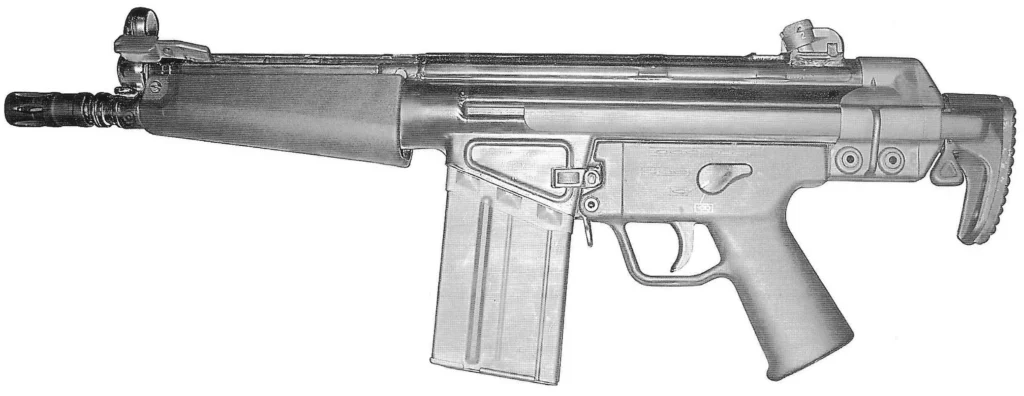
Bill Fleming went to work on the weapons he knew and was an expert in. The Heckler & Koch brand had been built on the company’s work with the Spanish firm CETME and their development of roller-delayed blowback weapons, including the MP5 that the SAS were already using.
HK was also producing the G3 rifle which was a selective-fire, 7.62 NATO battle rifle in use by several military forces, including the German military. Bill Fleming took the G3 and began adopting it to meet the needs of the British special operation forces.
The end result was the MC51, an exceptionally short-barreled G3. The G3 had a barrel length of 17.7 inches, and the MC51 shortened it to 8.3 inches in total. That’s exceptionally short for a full-powered 7.62 NATO rifle and the MC51 ended up not being much bigger than the SMGs in service. It offered substantially more power and penetration than the 9mm SMGs and remained fairly small and compact. It seemed to meet the needs of Great Britain’s elite warriors well and was liked enough that it evolved into a family of weapons.
Related: The Smatchet was a beastly weapon for WWII commandos designed by the legendary William Fairbairn
The MC51 family
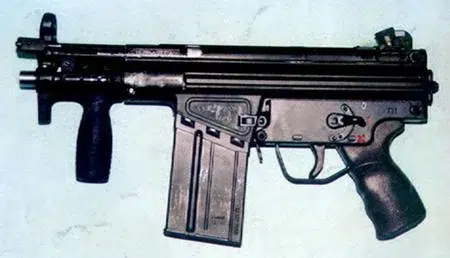
The standard rifle was a selective fire, 7.62 NATO platform with an 8.3-inch barrel. Variations were made with both the standard G3 fixed stock and a PDW-type collapsing stock for maximum space savings.
The second model was reportedly the silenced MC51 SD that used an integral suppressor. However, there is some debate on whether this gun ever existed as there don’t seem to be existing pictures or any records of its use or evaluation.
Finally, we have the MC51K (K standing for kurz, which is German for short). This model trimmed the barrel from an already short 8.3 inches to an estimated 4.5 inches. It also featured a vertical grip due to how short the forend comes out to be with such a short barrel.
The entire MC51 family was developed for the SAS and SBS, but the standard platform was seemingly the only one adopted in any number.
Related: This is what made the cadet rifle so useful for military forces around the world
The problems with the MC51
However, the MC51 came with problems. Let me paint a picture of how crazy the MC51 and its short 8.3-inch barrel actually are. A 7.62 NATO round is best fired from barrels that are often in excess of 20 inches. It is a powerful, hard-hitting caliber that is described as full-powered. It’s substantially more powerful than the current NATO standard 5.56 and is a cartridge used in medium machine guns that support platoon and company-level attacks. From a proper rifle, it can reach out to 1,000 yards.
A powerful cartridge fired from a short 8.3-inch barrel is absurd. Amongst gun enthusiasts and small arms experts, the MC51, and especially the MC51K, is often jokingly referred to as a portable flash bang dispenser. The muzzle flash and concussion generated by these firearms is substantial. Imagine a muzzle blast a foot long, blasting forward, followed by an extremely loud gunshot that is substantially louder than most guns. The flash is caused by gunpowder that has not fully burned and turned into gas as gunpowder needs a certain length of barrel to burn up in its entirety, and 8.3 inches isn’t sufficient.
Additionally, the 7.62 NATO round is no slouch in the recoil department. These guns are quite light, and the lighter a weapon is, the more recoil the user feels. Further, the shorter barrel generates more muzzle rise and less control. On top of all this, the weapons had some slight reliability issues and were nowhere near as reliable as the SBS and SAS needed them to be.
The end of the line
The British pulled the MC51 series from service and replaced it with a variety of weapons. They specifically moved towards 5.56 rifles, like the M16 series and the HK G33. These proved to be lighter, easier to control, more reliable, and generally more functional than the MC51 series. While it didn’t serve long, the MC51 is a fascinating weapon and an interesting speed bump on the way to the modern rifle.
Read more from Sandboxx News
- Russia is using deadly air tactics to stop Ukraine’s counteroffensive
- The Marines’ new drone-truck can take out enemy ships from 1,000 miles out
- The CIA used miniature models to meticulously plan high-stakes operations
- Ukrainian forces are using a clever and cheap method to take out Russia’s best tanks
- What is the legendary Black Triangle UFO?
Related Posts
Sandboxx News Merch
-

‘AirPower’ Classic Hoodie
$46.00 – $48.00 Select options This product has multiple variants. The options may be chosen on the product page -

‘Sandboxx News’ Trucker Cap
$27.00 Select options This product has multiple variants. The options may be chosen on the product page -

F-35 ‘Lightning’ Framed Poster
$45.00 – $111.00 Select options This product has multiple variants. The options may be chosen on the product page

Travis Pike
Travis Pike is a former Marine Machine gunner who served with 2nd Bn 2nd Marines for 5 years. He deployed in 2009 to Afghanistan and again in 2011 with the 22nd MEU(SOC) during a record-setting 11 months at sea. He’s trained with the Romanian Army, the Spanish Marines, the Emirate Marines, and the Afghan National Army. He serves as an NRA certified pistol instructor and teaches concealed carry classes.
Related to: Gear & Tech, Special Operations
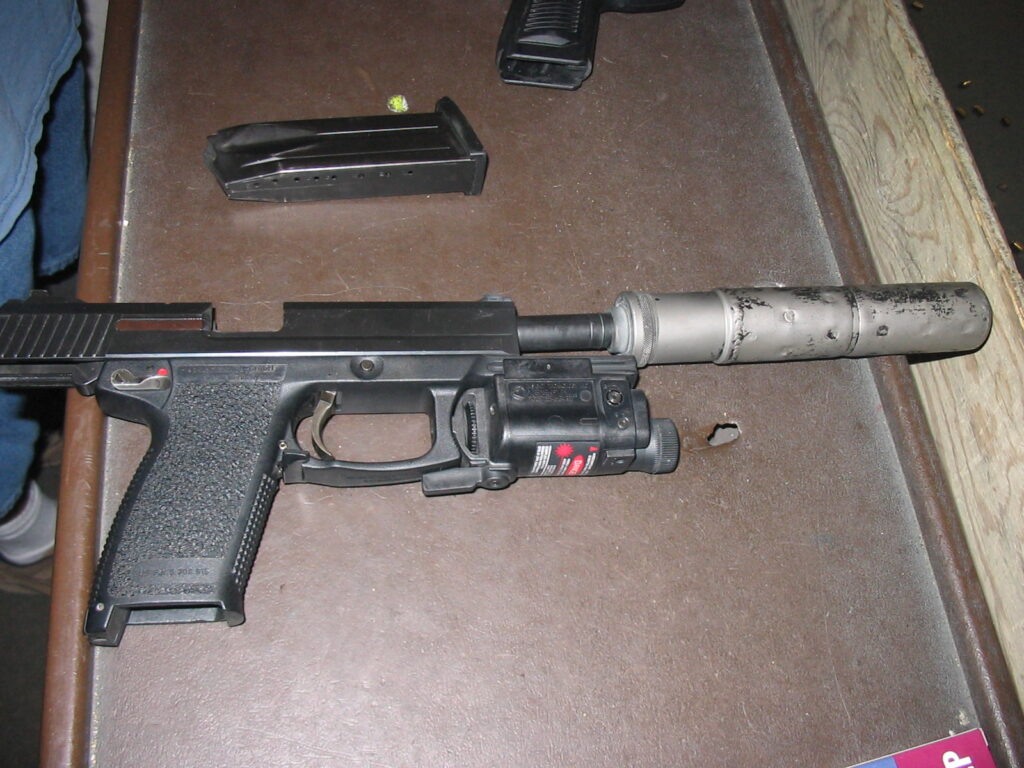
The HK MK23 built for SOCOM was the first and last offensive handgun
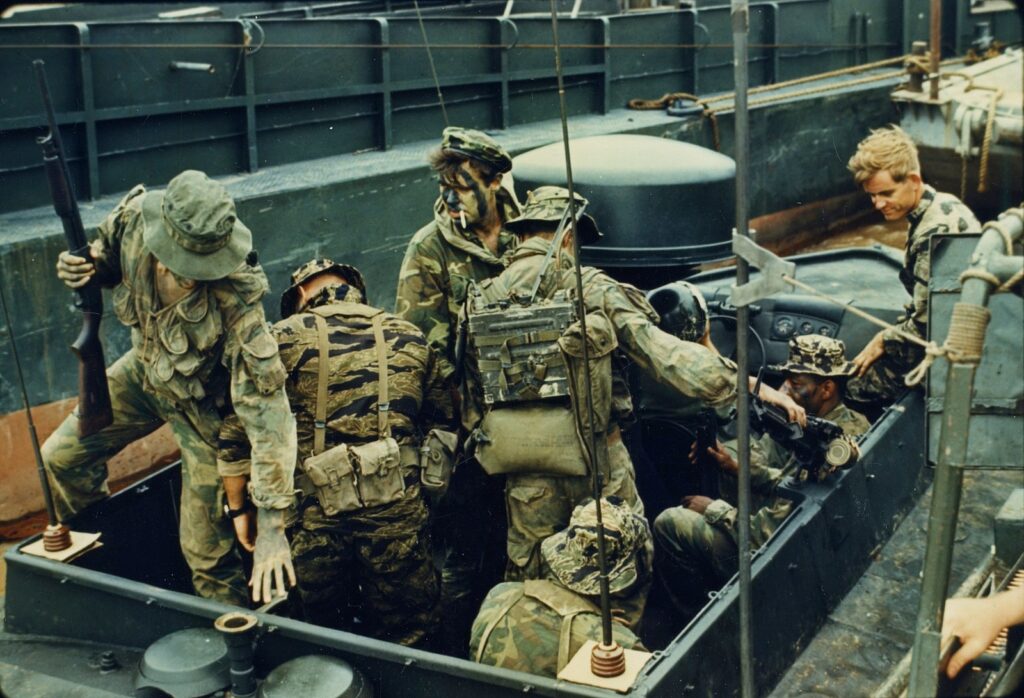
The slick custom shotgun carried by a Navy SEAL point man in Vietnam
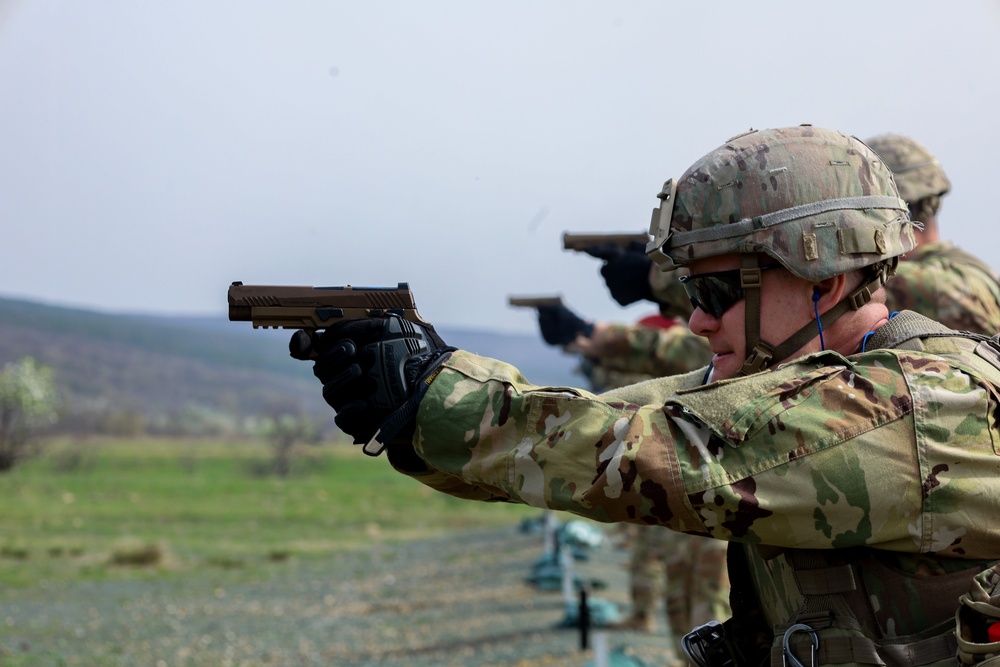
Are the Army’s old Beretta M9 and new SIG M17 pistols as similar as people think?

The Switchblade, loitering munitions, and the new terrifying face of warfare
Sandboxx News
-

‘Sandboxx News’ Trucker Cap
$27.00 Select options This product has multiple variants. The options may be chosen on the product page -

‘AirPower’ Classic Hoodie
$46.00 – $48.00 Select options This product has multiple variants. The options may be chosen on the product page -

‘AirPower’ Golf Rope Hat
$31.00 Select options This product has multiple variants. The options may be chosen on the product page -

‘Sandboxx News’ Dad Hat
$27.00 Select options This product has multiple variants. The options may be chosen on the product page
